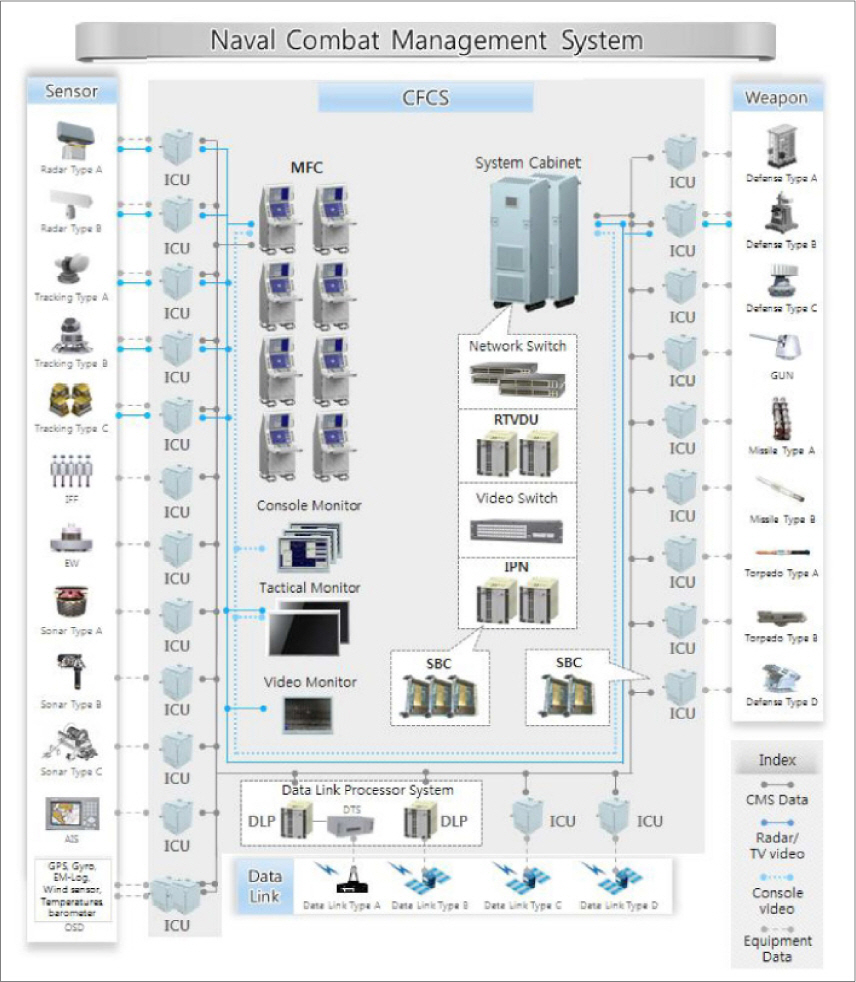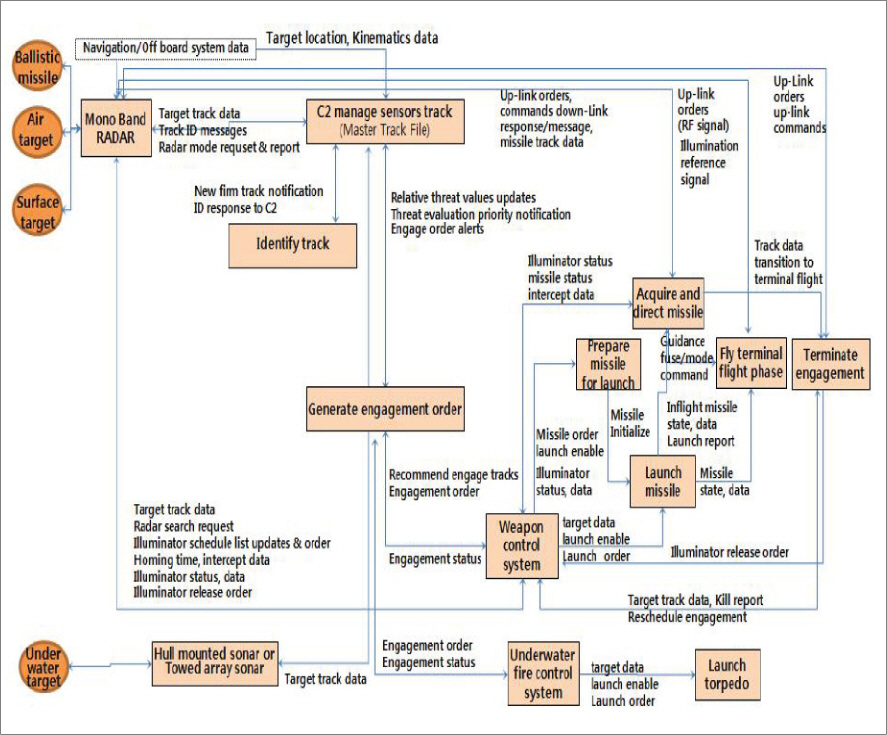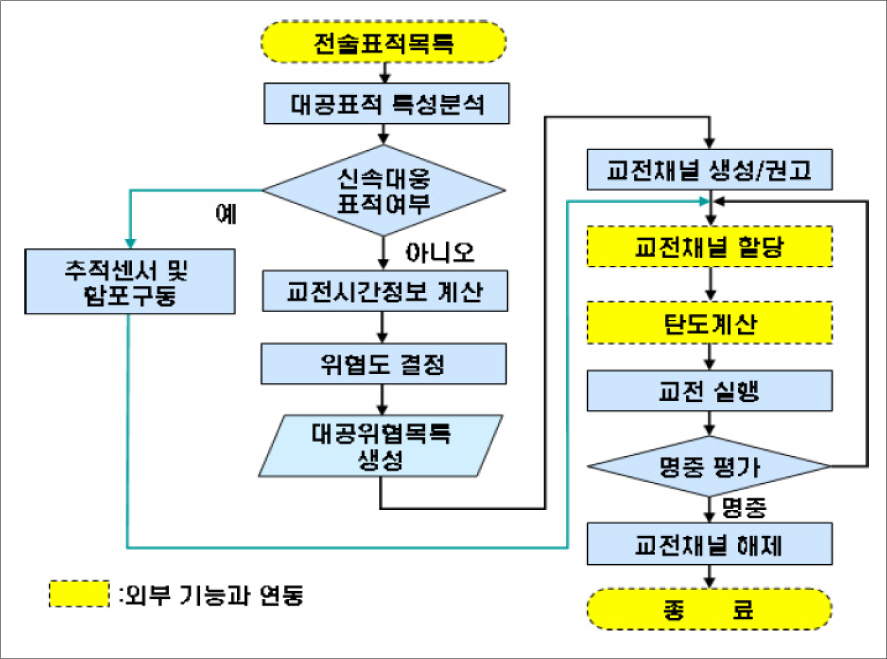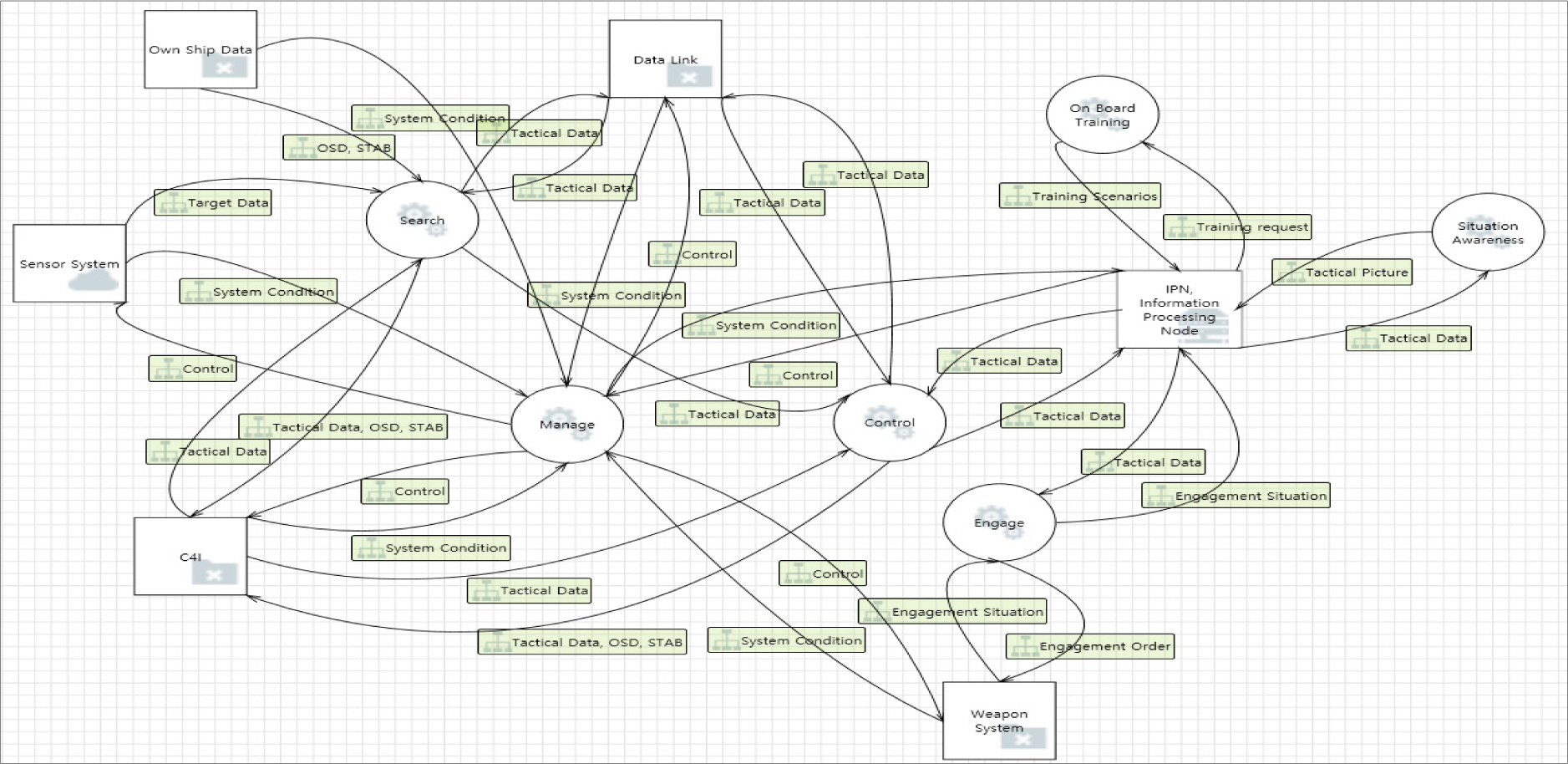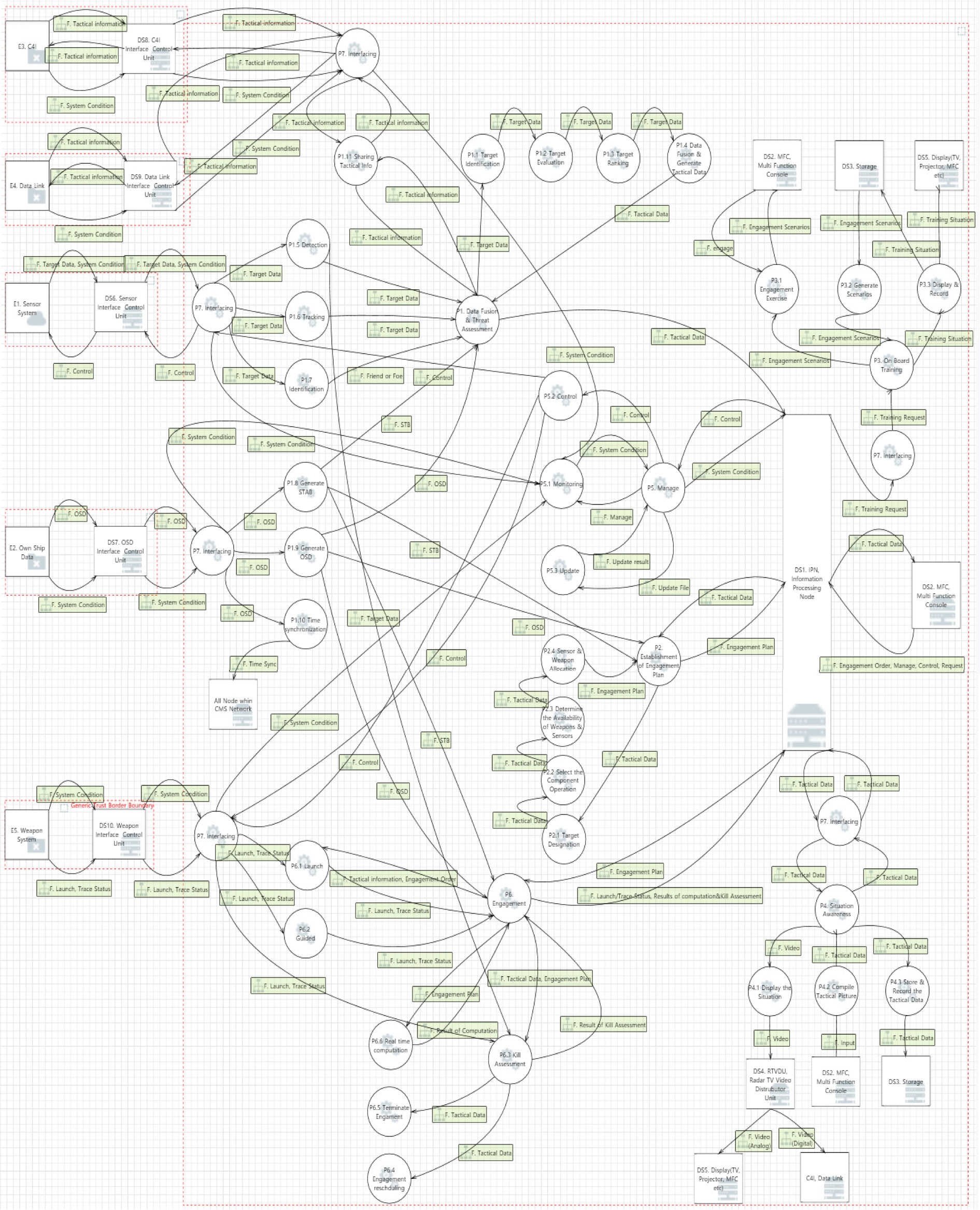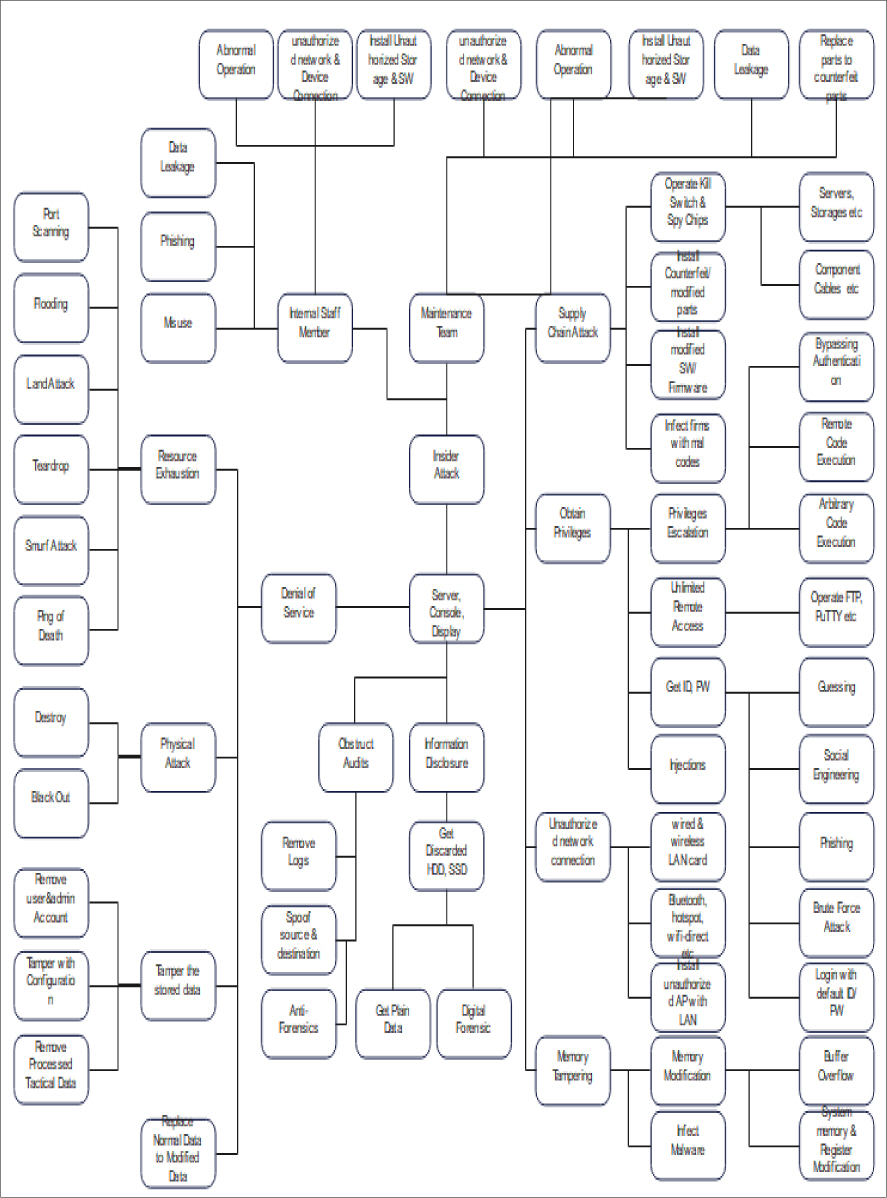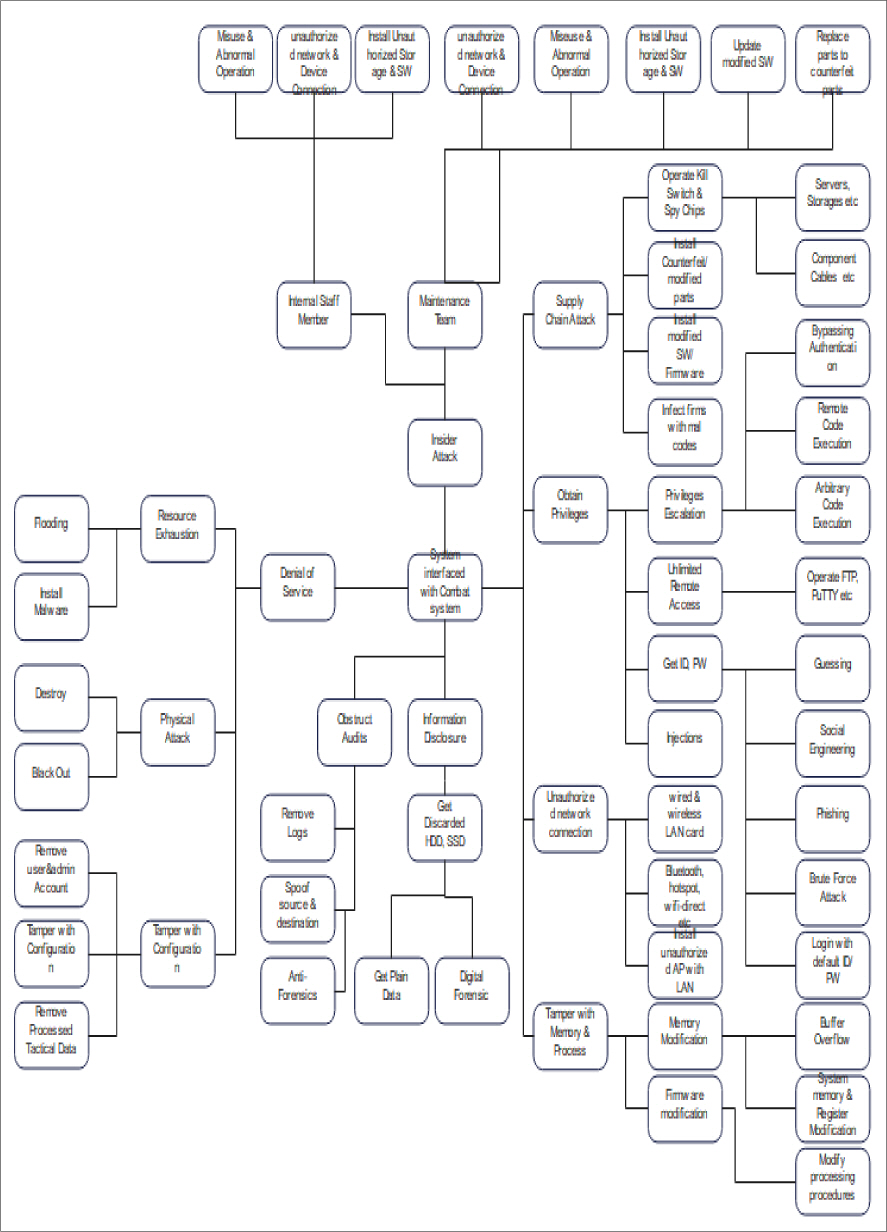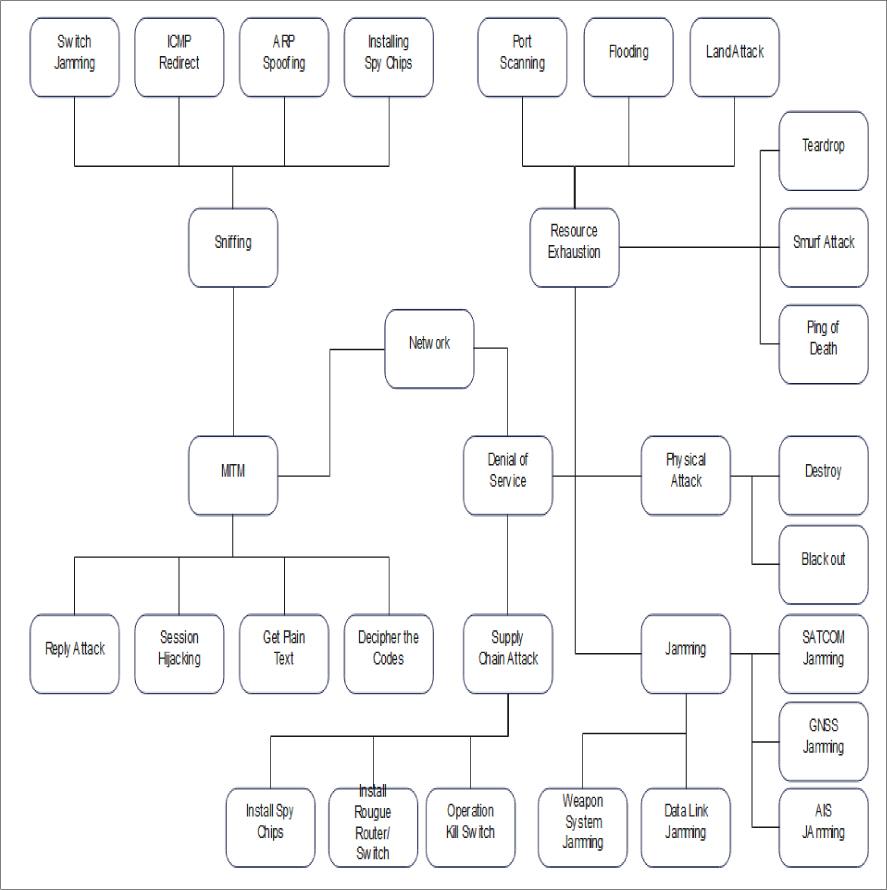[1] Soon-Ju Koh, "Development and Direction of Development of Combat System for Network- Centered Warfare," The journal of Korea Institute of Electronics Engineers, Vol. 37, No. 11, pp. 27–38, 2010.
[2] Young-Keun Go and Chum-Su Kim, "Cryptographic Overhead of DDS Security for Naval Combat System Security," The Korean Institute of Information Scientists and Engineers Proceedings, Vol. 2017, No. 6, pp. 1217–1219, 2017.
[3] Su-won Lee, Jae-yeon Lee and Seok-jun Hong, "A Study on the Cyber Security for Naval Combat Management System," Communications of the Korean Institute of Information Scientists and Engineers Proceedings, Vol. 46, No. 2, pp. 865–866, 2019.
[4] Jae-wook Jang, Hee-gab Sun and Jae-ryong Hwang, "A Reinforcement Methods of Warship's Combat System based on Information Assurance," Journal of Defense and Security, Vol. 3-2, 2021.
[5] Neculai Grigore and Todd Bonnar, "Naval Operations - Cyber Security Afloat," CJOS COE, 2020.
[6] J. M. Lanouette, "Naval Cyber Warfare Capability Requirement," Canadian Forces College, p. 1–9, 2016.
[7] J. M. Lanouette, "Naval Cyber Warfare: Are Cyber Operators Needed on Warships to Defend Against Platform Cyber Attacks?," Master of Defence Studies, Canadian Forces College, 2016.
[8] Doo-Hwan Jung, A Study on Improving Data Integrity using SHA256 Hash Function for Naval Combat System, CICS Proceedings. pp. 278–279, 2015.
[9] Kwang-yong Hwang, A Study on SE-based Design Methodology for Next-generation Naval Combat System Architecture, Ph. D. Dissertation, Hannam University in Daejeon, Korea. 2017.
[10] Sang-Min Kwon, Naval Combat System, Korea, Patent No. 10-2073014. 2019.
[11] Soo-young Kang, A Study on the CIA-Level based Security-by-Design Development Framework, Ph. D. Dissertation, Korea University School of Cybersecurity, Korea. 2021.
[12] Microsoft. Security Development Lifecycle - SDL Process Guidance Version 5.2, 2012.
[13] Microsoft. Microsoft Threat Modelling Tool 2016, https://www.microsoft.com/en-us/download/details.aspx?id=49168.
[14] Adam Shostack, Threat Modelling: Designing for Security, https://adam.shostack.org/blog/category/threat-modelling/. Jun. 2019.
[15] Adam Shostack, "Experiences Threat Modelling at Microsoft," Microsoft, 2008.
[16] Adam Shostack, "Threat Modelling: Designing for Security," John Wiley & Sons, Feb. 2014.
[17] Microsoft. Chapter 3. Threat Modelling, [Internet]. https://msdn.microsoft.com/en-us/library/ff648644.aspx. July, 2010.
[18] DistriNet Research Group. LINDDUN: Privacy Threat Modelling, https://linddun.org/. Jun. 2019.
[19] CERT, Software Engineering Institute. Carnegie Mellon University, OCTAVE [Internet], http://www.cert.org/resilience/products-services/octave/.
[20] Trike, http://www.octotrike.org/. Jun. 2019.
[21] Tony UcedaVelez. "Real World Threat modelling using the PASTA Methodology," "Managing 36 Partner," VerSprite, 2012.
[22] Bruce Schneier, Attack Tree, Dr. Dobb's Journal. Aug. 1999.
[23] Abdullah Sharaf Alghamdi, Tazar Hussain and Gul Faraz Khan, Enhancing C4I Security using Threat Modelling, International Conference on Computer Modelling and Simulation. 2010.
[24] Michael T. Kurdziel, "Cyber Threat Model for Tactical Radio Networks," The International Society for Optical Engineering, 2014.
[25] Hyun-ju Kim and Dong-su Kang, "A Design of Risk-Based Security Threat Assessment Process for Fighter-Aircraft Airworthiness Security Certification," KIPS Trans. Softw. and Data Eng, Vol. 8, No. 6, pp. 223–234, 2018.
[26] Jong-in Lim, Future Cyber Threats and Enhancement of Naval Cyber Operations Capabilities, KIMS Periscope, No. 211. 2020.
[27] Su-won Lee, Jae-yeon Lee and Seok-jun Hong, "A Study on the Cyber Security for Naval Combat Management," Communications of the Korean Institute of Information Scientists and Engineers Proceedings, Vol. 46, No. 2, pp. 865–866, 2019.
[28] Cheol-Gyu Yi and Young-Gab Kim, "A Study on Software Security Test of Naval Ship Combat System," The Journal of the Korean Institute of Communications and Information Sciences, Vol. 45, No. 3, pp. 628–637, 2020.

[29] Cheol-Gyu Yi and Young-Gab Kim, "Security Testing for Naval Ship Combat System Software," IEEE, Vol. 9, pp. 66839–66851, 2021.

[30] Jae-wook Jang, Hee-gab Sun and Jae-ryong Hwang, "A Reinforcement Methods of Warship's Combat System based on Information Assurance," Journal of Defense and Security, Vol. 3, No. 2, pp. 147–172, Nov. 2021.
[31] Kyu-baeg Kim, Hong-keu Jo and Dong-seong Kim, "Design and Implementation of Adaptive Naval Gun Fire Simulator on a Naval Combat System," Journal of the KIMST, Vol. 21, No. 5, pp. 630–639, 2018.
[32] Ki-Tae Kwon, Ki-Pyo Kim and Hwan-Jun Choi, "Design of the Scalable Naval Combat System Software using Abstraction and Design Pattern," Journal of The Korea Society of Computer and Information, Vol. 24, No. 7, pp. 101–108, 2019.
[33] Gang-Soo Park, Byeong-Chun Yoo, Kyeong-taek Kim and Bong-Wan Choi, "A Methodology for the Ship System Integration with Open Architecture: Focusing on the Total Ship Computing Environment based Architecture Building and Validation," J. Soc. Korea Ind. Syst. Eng, Vol. 43, No. 3, pp. 68–76, 2020.

[34] Kun-Chul Hwang, "Anti Air Warfare Analysis & Design of the Patrol Killer Experiment Combat System by the Model-Based-Simulation," JKSS, Vol. 16, No. 4, pp. 23–31, 2007.
[35] Ho-jeong You and Byeong-gon Choi, "Message Analysis and Development Situation on the Tactical Data Link of Combat Management System in Naval," Journal of Satellite Information and Communications, Vol. 12, No. 2, pp. 21–27, 2017.
[36] Young-ran Jung, Woong-gie Han, Cheol-ho Kim and Jae-ick Kim, "On the Development of the Generic CFCS for Engineering Level Simulation of the Surface Ship," Journal of the KIMST, Vol. 14, No. 3, pp. 380–387, 2011.

[37] Young-il Song, "A Study on the Effectiveness Measures of Ship Combat Systems in the Composite Warfare," JNDS, Vol. 53, No. 1, pp. 163–192, 2010.
[38] Kwang-yong Hwang, Kyoung-chan Ok, Young-jin Kim, Bong-wan Choi, Hyun-seung Oh and Kwan-Seon Choi, "A Study on Development direction of Next- Generation Naval Combat System Architecture," Journal of the KIMST, Vol. 19, No. 1, pp. 105–118, 2016.

[39] Dong-Seong Kim and Sung-Kil Huh, "Distributed Control Network Technology for Trap Combat Systems," The Magazine of KIICE, Vol. 13, No. 2, pp. 47–53, 2012.
[40] Su-Hoon Lee and Jin-Su Ahn, A Study on the Three-Dimensional Display of Onboard Training for Naval Combat System, Proceedings of the Korean Institute of Information and Commucation Sciences Conference. pp. 62–65, 2022.
[41] Jae-Geun Lee, "A Study on the Standard Architecture of Weapon Control Software on Naval Combat System," Journal of The Korea Society of Computer and Information, Vol. 26, No. 11, pp. 101–110, 2021.
[42] Hun-Yong Shin and Joo-Yong Kim, "Research of OSD Standardization in Naval Combat System," The Proceedings of KIEE, Vol. 61, No. 9, pp. 354–355, 2012.
[43] Dong-Hee Lee, A Study on the Establishment and Development of a New Concept of Naval Combat System, Master's Thesis, Hannam University, Korea. 2005.
[44] Jin-soo Ahn, Jeom-soo Kim and Kyu-baek Kim, Combat Management System using Virtualization Function and Its Operation Method, Korea, Patent No. 10-1744689. 2017.
[45] Y S Kwon and Bang-Pyo Kong, "Development of the Operational Architecture of Korean Navy Fighting Ships with CEC System," Journal of KOSSE, Vol. 2, No. 1, pp. 5–10, 2006.
[46] Ji-seop Lee, Soo-young Kang and Seung-joo Kim, "Study on the AI Speaker Security Evaluations and Countermeasure," Journal of The Korea Institute of Information Security & Cryptology, Vol. 28, No. 6, Dec. 2018.
[47] Jae-Hyeon Park, Soo-young Kang and Seung-joo Kim, "Study of Security Requirement of Smart Home Hub through Threat modelling Analysis and Common Criteria," Journal of The Korea Institute of Information Security & Cryptology, Vol. 28, No. 2, Apr. 2018.
[48] Soo-young Kang and Seung-joo Kim, "Analysis of Security Requirements for Secure Update of IVI(In-Vehicle-Infotainment) Using Threat modelling and Common Criteria," Journal of The Korea Institute of Information Security & Cryptology, Vol. 29, No. 3, Jun. 2019.
[49] Paul Hong, Ye-jun Kim, Kwang-soo Cho and Seung-joo Kim, "A Study on Security Requirements for 5G Base Station," Journal of The Korea Institute of Information Security & Cryptology, Vol. 31, No. 5, Oct. 2021.
[50] Hussain Ahmad, Isuru Dharmadasa, Faheem Ullah and M. Ali Babar, A Review on C3I Systems’ Security: Vulnerabilities, Attacks, and Countermeasures, ACM Computing Surveys. 2022.
[51] Federico Maggi et al, "A Security Analysis of the Data Distribution Service(DDS) Protocol," Trend Micro Research, Inc., Japan, p. 15–20, 2022.
[52] INTERTANKO. Jamming and Spoofing of Global Navigation Satellite Systems(GNSS), pp. 4–9, 2019.
[53] Yonghyun Jo, Oong-jae Choi, Ji-woon You, Young-kyun Cha and Dong-hoon Lee, "Cyberattack Models for Ship Equipment Based on the MITRE ATT&CK Framework," MDPI Sensors, Vol. 22, No. 5, 2022.

[54] Frank Akpan, Gueltoum Bendiab, Stavros Shiaeles, Stavros Karamperidis and Michalis Michaloliakos, "Cybersecurity Challenges in the Maritime Sector," MDPI Network, Vol. 2, No. 1, pp. 123–138, 2022.

[55] Hyo-hyun Son, Kwang-jun Kim and Man-hee Lee, "Analysis of U.S. Supply Chain Security Management System," Journal of The Korea Institute of Information Security & Cryptology, Vol. 29, No. 5, pp. 1089–1097, 2019.
[56] Daewon Kim et al, "Trends in Supply-Chain Security Technologies," ETRI Electronics and Telecommunications Trends, Vol. 34, No. 4, pp. 149–157, 2020.
[57] Yong-Joon Lee, "Defense ICT Supply Chain Security Threat Response Plan," KOCOSA, Vol. 20, No. 4, pp. 125–134, 2020.

[58] Eungkyu Lee and Jung-duk Kim, "A Case Study on ICT Supply Chain Attacks," Journal of Information Technology and Architecture, Vol. 16, No. 4, pp. 383–396, 2019.
[59] KrCERT/CC. "Security Agency_Supply Chain Attack Case Analysis and Response Plan," KISA, p. 3–31, 2022.
[60] The Big Hack: How China Used a Tiny Chip to Infiltrate U.S. Companies, Bloomberg Businessweek. Oct. 2018;https://www.bloomberg.com/news/features/2018-10-04/the-big-hack-how-china-used-a-tiny-chip-to-infiltrate-america-s-top-companies.
[61] Guide to Industrial Control Systems(ICS) Security, NIST SP 800-82 Rev.2. May, 2015.
[62] Industrial Control Systems Cyber Emergency Response Team. "Recommended Practice: Improving Industrial Control System Cybersecurity with Defense-in-Depth Strategies," Department of Homeland Security(DHS), p. 11–42, 2016.
[63] G. S. Andreas and A. L. Opdahl, Templates for Misuse Case Description, in Proceedings of the 7 th International Workshop on Requirements Engineering, Foundation for Software Quality. pp. 4–5, 2001.
[64] I. Alexander, "Misuse Cases: Use Cases with Hostile Intent," IEEE Software, Vol. 20, No. 1, pp. 58–66, 2003.

[65] Kim Wults, Riccardo Scandariato and Wouter Joosen, "LINDDUN Privacy Threat Tree Catalog," CW675, Department of Computer Science, KU Leuven, Sep. 2014.
[66] Asoke K. Talukder and Manish Chaitanya, 17 December 2008. "Architecting Secure Software Systems," CRC Press, p. 50.ISBN 978-1-4200-8784-0. Retrieved 5 October 2016..
[67] "Security and Privacy Controls for Information Systems and Organizations," NIST SP 800-53 Rev., Vol. 5, Dec, 2020.





